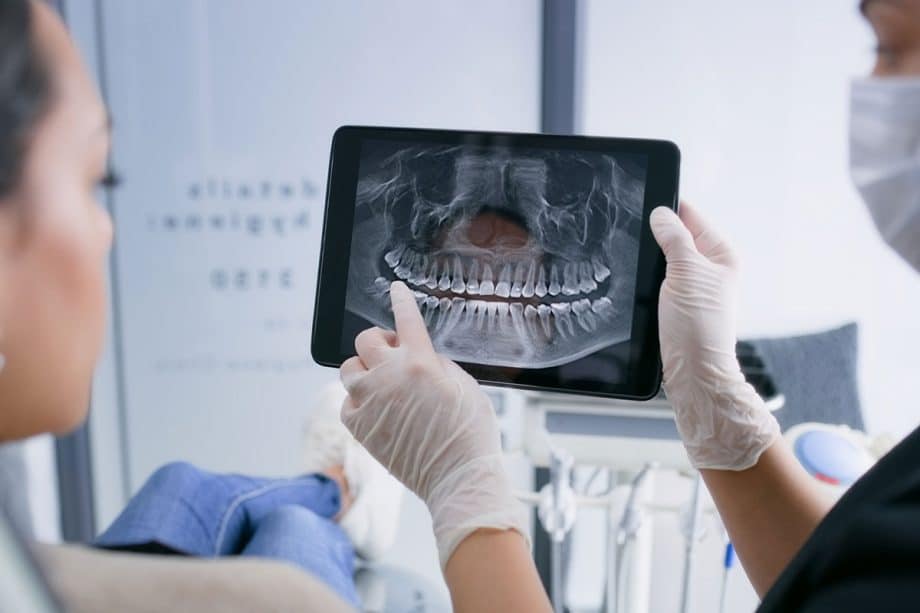Dental X-rays are an important tool used to assess the health of the oral cavity and development of the teeth and jaw. They give dentists a visual of areas beyond what the naked eye can see and play a crucial role in the early detection and prevention of dental problems in patients of all ages.
At what age should a child get their first dental X-ray? Let’s talk about it.
Why X-Rays Are Important For Kids
The American Academy of Pediatric Dentistry (AAPD) recommends children have their first dental bitewing X-rays, or bitewing radiographs, only when the teeth in the back begin to touch each other and the surfaces between the teeth cannot be seen visually during an exam. This occurs typically around 3 years old, but can occur earlier or later depending on the individual. When the teeth start to touch is also an important time to introduce flossing! The surfaces we floss are the same surfaces the pediatric dentist needs to see to confirm no cavities are present. Dental X-rays can reveal cavities and give insight into the permanent teeth that have not yet erupted.
When Your Child Should Have Their First Dental X-Ray
There is no set age for a child to have their first dental X-ray. However, the American Academy of Pediatric Dentistry (AAPD) recommends that children receive their first Bitewing radiographs when the teeth in the back start to touch each other. The pediatric dentist will first evaluate clinically whether radiographs are indicated at that visit. You should ask your dentist “are the teeth in back touching? Do we need to start flossing and take x-rays?”. This will open up the conversation and allow you to voice any concerns you may have.
Below are a few factors that are taken into consideration by pediatric dentists.
Risk Factors
Kids with poor oral hygiene, a family history of dental problems, or who frequently consume sugary foods and beverages may be at higher risk for cavities. The pediatric dentist will perform a caries risk assessment and prescribe a dental x-ray schedule customized for the child based on whether they are high or low risk for cavities.
Development
The pediatric dentist will take the child’s development and eruption pattern into consideration before deciding to take X-rays. Doing so will give them a glimpse into what we expect in terms of growth and development. We can identify issues such as impacted permanent teeth or even congenitally missing teeth, so families can have the option of an early specialist evaluation and intervention, if indicated.
Are Dental X-Rays Safe?
Dental X-rays are considered to be safe for children but are still prescribed cautiously and appropriately. Digital X-rays reduce radiation exposure compared to traditional film X-rays.
Learn More About Your Child’s Oral Health Needs
At Marigold Pediatric Dentistry & Orthodontics, we do everything we can to provide our little patients with the best oral care. And that means taking advantage of digital diagnostic images— a very important part of preventative dental care.
Want to learn more? Contact us today at 973-821-7161 to schedule an appointment. Or request an appointment online.
Frequently Asked Questions
How often should kids get dental X-rays?
Frequency of radiographs is based on risk factors. Every child gets a Caries Risk Assessment completed during their visit. Kids who are low risk for cavities may only need x-rays once per year. Whereas a child who is at high risk for cavities may need them more frequently–for example, every 6 months to monitor areas of concern.
Can I opt out of X-rays for my child?
Dental X-rays are an important part of preventative treatment. Discuss your concerns with your pediatric dentist to determine whether or not an agreeable plan can be put in place that will focus on the child’s best interest.


